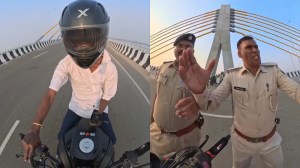Exchange stones for olive branch
O children of Gaza/ Don't mind our broadcasts/ Don't listen to us/ We are the people of calculations, of additions, of subtraction/ Wage y...

O children of Gaza/ Don’t mind our broadcasts/ Don’t listen to us/ We are the people of calculations, of additions, of subtraction/ Wage your wars and leave us alone/ Children of Gaza/ Don’t refer to our writings/ Don’t read us/ We are your parents/ Don’t be like us/ Don’t worship us/ O mad people of Gaza/ A thousand greetings to the mad/ The age of political reason has long departed/ So teach us madness.
Nizar Qqbbani, an eminent Arab poet, was in the early months of 1988 paying homage to an uprising that began in the strip of Palestinian territory on the edge of the terribly blue Mediterranean, but was to soon shake the world. The Intifada’. Qabbani called his work in free verse, The Trilogy of the Children of the Stones,’ in honour of the bare-fisted kids in the neighbourhood who had offered up their childhood games of slingshots and stones as sacrifice against the brutally adult, self-loading weapons of the Israelis.
The war of the unequals captured the imagination of the world, Palestine’s lament invoking a deep anguish underside. But as the fire died and the movement threatened, only three years later, to degenerate into a lumpen call to arms, that permanent revolutionary Yasser Arafat summoned up the courage to abandon the grand, Arab dream and deal, instead, for shared, realistic stakes with their Semitic blood brothers, the Israelis.
That joint undertaking was called the Middle East peace process and it gave Arafat and Israeli PM Yitzhak Rabin, the courage of their respective convictions, the Nobel peace prize. Today, barely seven years after it was signed, that peace lies in tatters on the streets of Gaza and Ramallah and the Jewish settlements outside Jerusalem.
The Arab kids are back to fitting their slingshots with stones and aiming it at the enemy. Israeli soldiers, nervous as hell, are back to overreacting with automatic gunfire. But as Muhammed al-Durrah and Vadim Norzische become icons of tragedy and revenge in a land that is once again being watered with blood, a distinct difference with the intifada’ of 1987 is apparent. Today’s Al Aqsa intifada’ or the permanent intifada’ seems bereft of the sheer innocence of anger. That was akin to a rebelliousness of youth against the pacifist, compromising grain of the old. Today’s rage and frustration have a deliberate, self-destructive edge to them. It’s almost as if these kids have to die, if self-respect has to return to Palestine.
Meanwhile, the Israeli soldiers — not much older than their Palestinian counterparts — prepare to defend the indefensible statements and actions of many of their leaders.
In direct contrast to the staccato sounds of gunfire and the primitivewhooping of slingshot, mixed signals emanate from New Delhi. Once upon a time in a black and white world it was easy to support the Arabs and their causes.
Interestingly enough, the BJP sought to reinvigorate foreign policy when it came to power two years ago but seems to have been caught in the centre of a muddle when confronted with its first, major crisis that has nothing to do with the fallout of Pokharan. In the beginning there was silence, then avowals from New Delhi that both the Israelis and the Palestinians want India to mediate. Unable to juggle more than one relationship at the same time, Delhi’s dilemma in the new world order is beginning to take on the dimensions of a tragic comedy.
But back to the Middle East and its fearsome spiral of death and destruction. To the news that Jordan’s King Abdullah has signed a freetrade accord with the US, within days of attending the Arab League summit over the weekend, which laid the responsibility of this violence with Israel. Perhaps Abdullah is the new Arafat, perhaps not. One of the messages he’s clearly sending out of Washington is that the children of the intifada’ must sooner rather than later exchange their stones for olive branches. That the violence will instigate a further slipslide into Third World deprivation and hurt the Palestinians far more than it can do the Israelis.




- 01
- 02
- 03
- 04
- 05



























